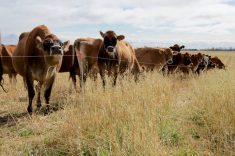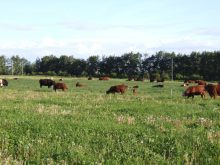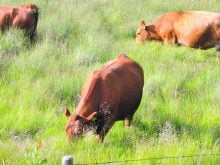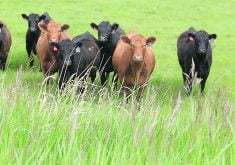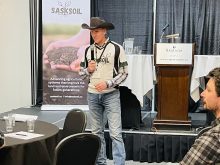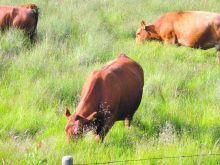LANIGAN, Sask. — Greenhouse gas emissions and climate change mitigation are two phrases that have the potential to cause anxiety among Canadian producers.
However, grain growers and ranchers shouldn’t assume that reducing greenhouse gas emissions on the farm will necessarily result in higher operating costs and lower profits.
In fact, the exact opposite may be true.
Alan Iwaasa, an Agriculture Canada researcher from Swift Current, Sask., made that case during a presentation on methane emissions from beef cattle at the Western Beef Development Centre’s annual field day.
Read Also
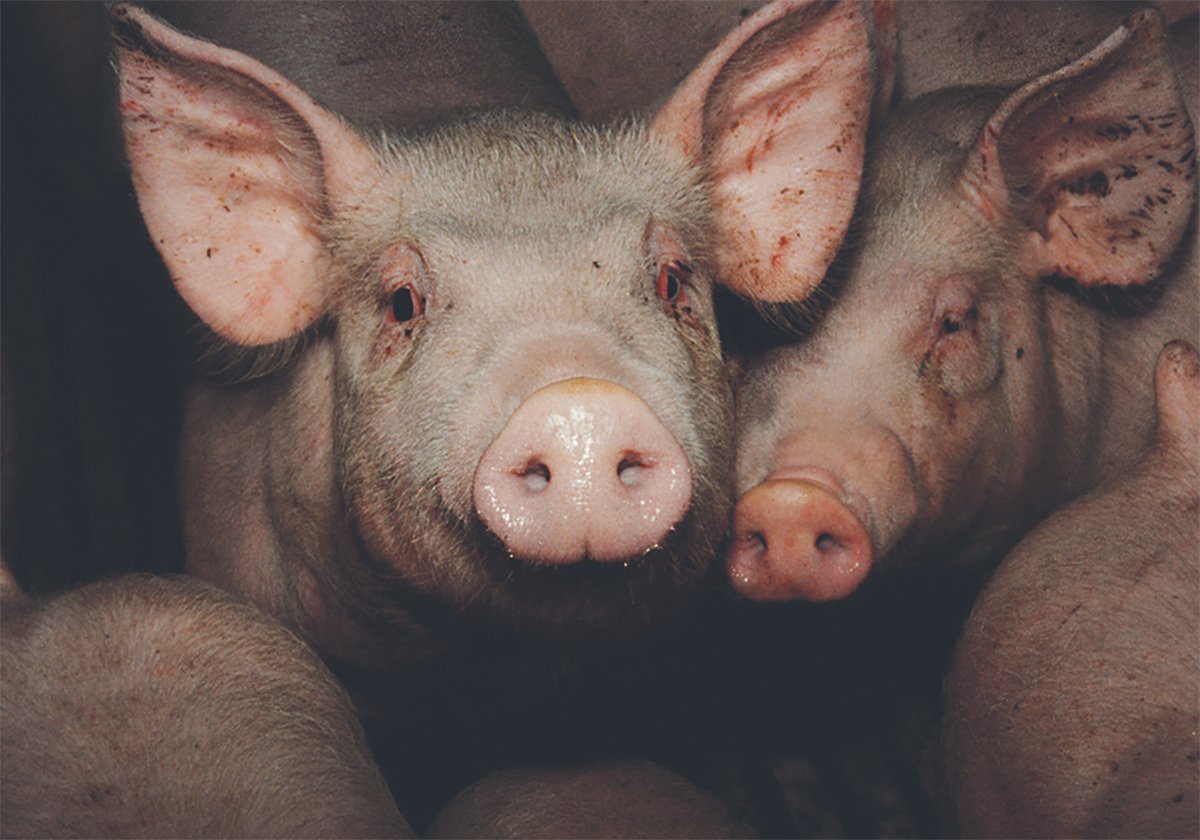
The Western Producer Livestock Report – October 30, 2025
Western Producer Livestock Report for October 30, 2025. See U.S. & Canadian hog prices, Canadian bison & lamb market data and sales insights.
“One of the things associated with methane production in cow-calf operations is that it represents a direct energy loss,” Iwaasa said during the June 21 event near Lanigan.
“The animal, as it’s consuming or eating material or feed, is losing about three to 12 percent of that energy through methane emissions.
“It would be better if we could refocus that energy or make better use of it because it’s currently not being used for growth or (meat) production by that animal.”
Iwaasa is conducting research to determine which types of feed are more commonly associated with elevated methane production in beef cattle.
He has used a specialized device that measures methane emissions from cattle to compile data from animals that graze on feed sources such as alfalfa, sanfoin, brome and grass-legume mixtures.
The device sits on a cow’s neck and measures emission from the animal’s mouth.
Contrary to popular belief, the vast majority of methane emissions produced by cattle come from the front end rather than the back end.
It is too early to suggest that any particular feed source is consistently associated with higher methane levels, Iwaasa said.
In some cases, alfalfa produced more methane than grasses. In other cases, grasses produce more methane than alfalfa.
A wide variety of factors can affect feed conversion, including forage type, pasture staging, timing of grazing and growing conditions that affect plant development.
Timing of grazing is a critically important factor.
Iwaasa said cow-calf producers can reduce energy loss and methane emissions by ensuring that different forage species are grazed during their optimal stage when nutrient availability is at its greatest.
Incorporating legume and grass mixtures into grazing operations is another beneficial strategy.
“The ability to graze these different forages at the proper stage of development at the right forage quality is very important,” Iwaasa said.
“By introducing your cattle to these various feed sources at the right time, you’re going to get better performance by those animals, better feed efficiency and, as a result of that, a reduction in methane emissions.”
As part of its research program, the WBDC has been examining the benefits of various grass and legume mixtures.
“Most producers are trying to develop systems that will increase their grazing productivity,” Iwaasa said. “They’re trying to get more beef on a pound per acre basis, and they’re also trying to develop pasture systems that are sustainable and long lived.”
Growers can achieve both goals by managing rangeland resources more intensely and timing their grazing operations optimally.
“That (increased productivity) is an added benefit to the producer, but there’s also an added benefit to agriculture and to the country as a whole by reducing certain greenhouse gas emissions,” Iwaasa said.
“It’s sort of a win-win situation, as I see it.”




